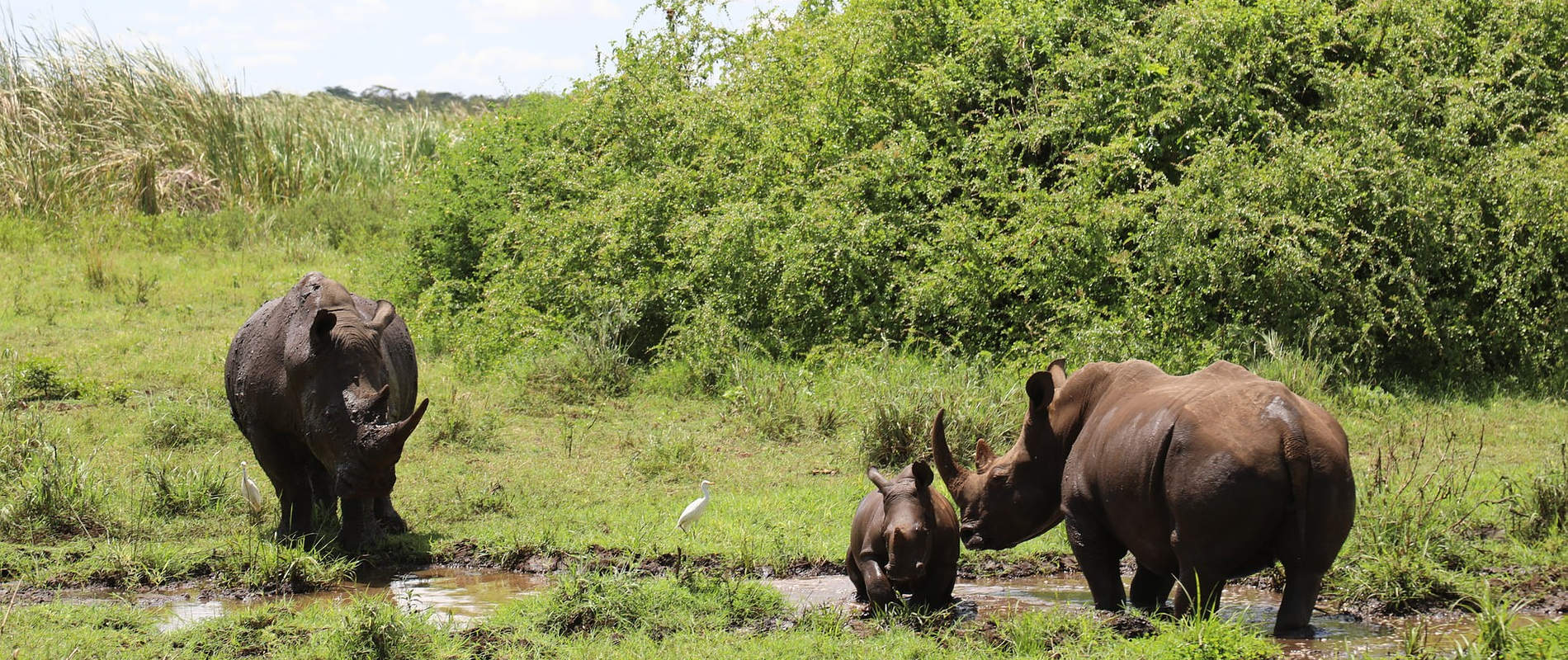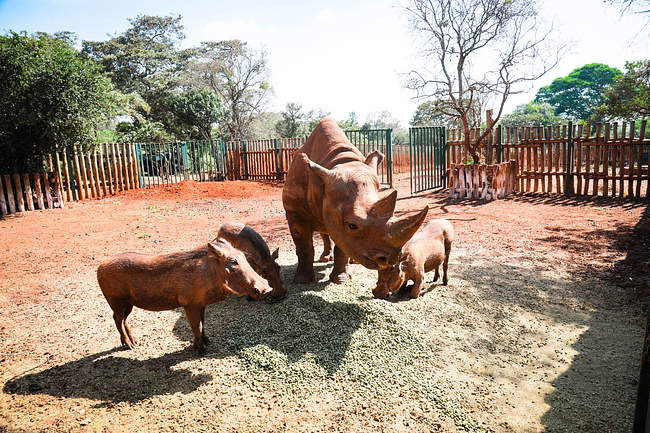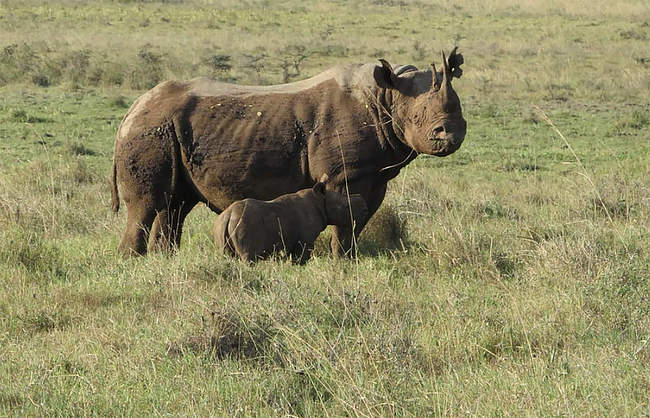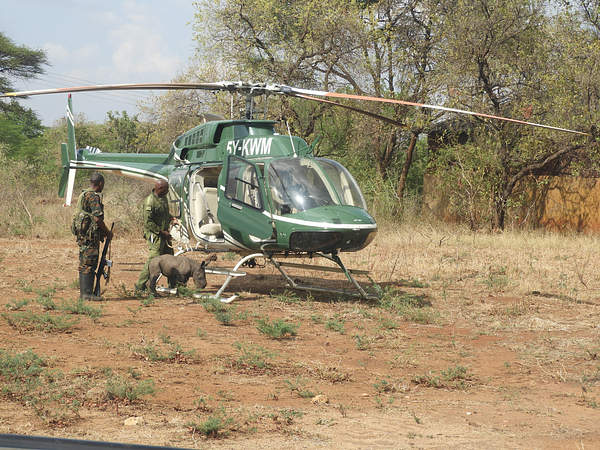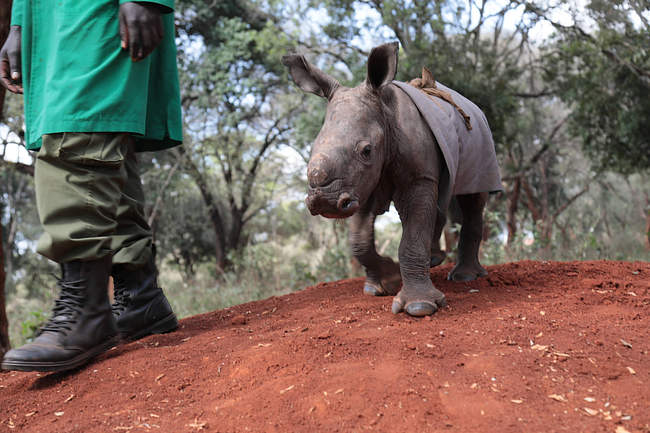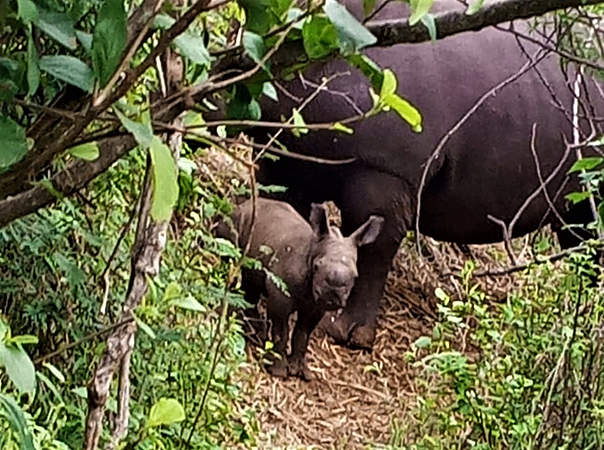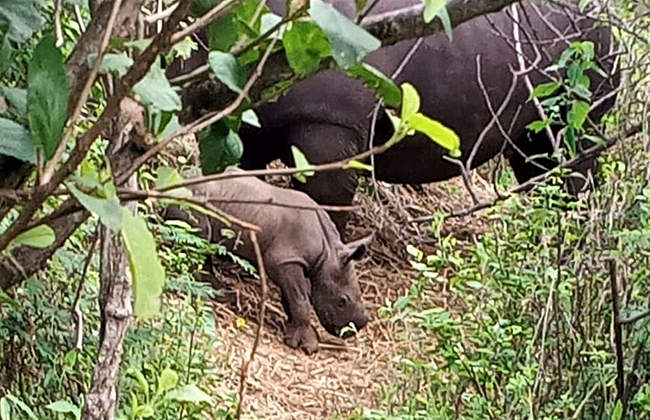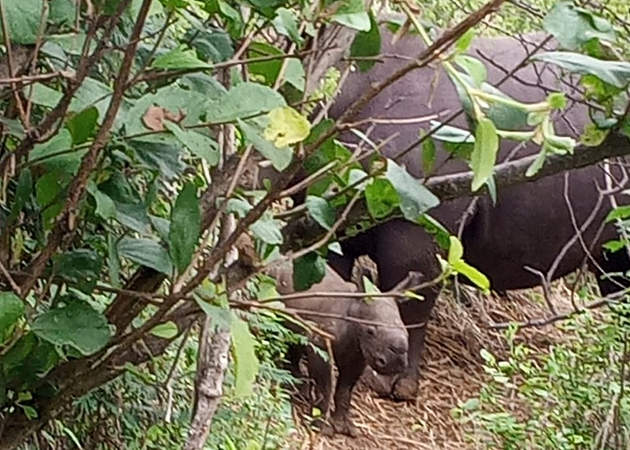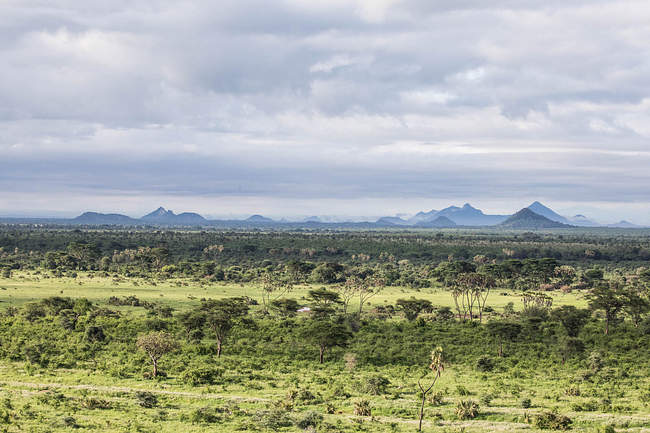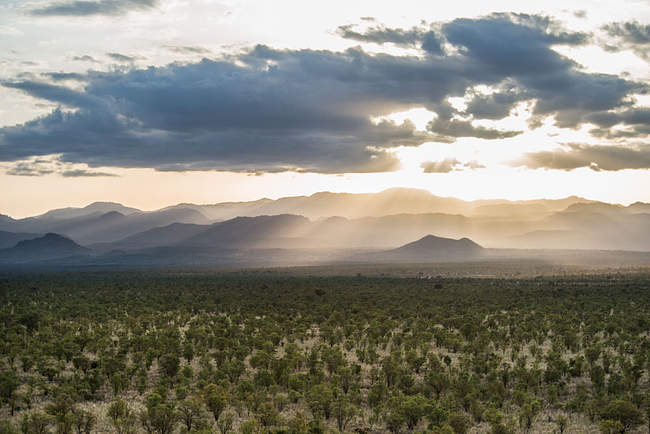Once upon a time, rhinos reigned across the African continent. In the 1960s, when David Sheldrick was at the height of his tenure as the founding warden of Tsavo National Park, more than 20,000 black rhinos roamed wild in Kenya. Just two decades later, much of that population was decimated by poachers, and by the end of the 1980s, there were less than 300 remaining in the country. White rhinos, a species introduced to Kenya, have experienced a less drastic decline in numbers, but nevertheless have still suffered at the hand of poachers. The northern white rhino, again not endemic to Kenya and a subspecies of the white rhino, became effectively extinct in the wild after the last surviving male passed away in 2018.
The situation for rhinos sounds grave — and it is, but it is not without hope. Since our inception, we have been working closely with the Kenya Wildlife Service to protect our country’s wildlife and the creatures who call it home. Ours is a unique and impactful partnership, one that spans over 42 years. We have invested heavily in protecting Kenya’s most vulnerable and iconic species, with a particular focus on rhinos. Our pilots conduct daily patrols from the air, while our anti-poaching operations monitor key habitats. To date, SWT/KWS Mobile Veterinary Units have attended to 582 rhinos, from life-saving treatments to ear notching and tracking device placement.

Over the years, we have successfully raised 17 black rhino, reintegrating them back into the wild. Solio is one such orphan. Rescued in 2010, after she lost her mother likely at the hands of poachers, we raised her at the Nursery and then reintegrated her into the wild rhino populations of Nairobi National Park. Just last year, she gave birth to a healthy little boy named Sultan, and both are thriving in the wild. Maxwell, another black rhino, has the auspicious distinction of being the Nursery’s most tenured resident. Born blind from a birth defect, he wouldn’t be able to survive on his own in the wild, so he is the exception that has a forever home with us.
In 2018 we made a significant investment in an expansion of the Meru Rhino Sanctuary, a stronghold for Kenya’s rhino population. The project nearly doubled the size of the sanctuary to 83 square kilometers, providing more protected space for its growing population of black and white rhinos to blossom. Crucial infrastructure, such as fencelines, KWS security bases and numerous wildlife corridors, were also included.
We remain closely engaged with the sanctuary, funding operations that are key to its ongoing success. This year, we made a US$50,000 donation to further equip the 20 KWS ranger outposts so vital in keeping the Meru Rhino Sanctuary’s rhinos safe. Through the donation, we equipped each of the security outposts with new sleeping tents and bed rolls, mess tents, and remote solar charging banks. We also donated new tyres for all five of the KWS security vehicles, ensuring that wheels are always in motion within the sanctuary. We are also pleased to announce the completion this year of the sanctuary’s third entrance base, which houses security personnel and fence maintenance teams.
The Meru Rhino Sanctuary has become a bastion of Kenya’s rhinos and a beacon of hope for the species — and each new birth tangibly confirms this. March was a month for great celebration within Meru Rhino Sanctuary, as its population grew by three perfect babies. One birth was particularly poignant. As you might remember, a white rhino named Makosi gave birth to a calf in late 2018, who rangers found stuck in the mud. Despite the rangers’ best efforts to reunite mum and baby, Makosi rejected her, so the newborn was brought to the Nursery. Little Maarifa enchanted all who knew her, leaving a permanent imprint on our hearts, but she tragically and unexpectedly passed away from a bout of colic just a few months after her rescue.
We are thrilled to be able to share that on 27th March 2020, Makosi gave birth to another enchanting little baby. They are latched at the hip and the picture of happiness, as you can see in the photographs above that KWS security teams managed to take when he was just three days old. This marks the second generation of rhinos who have found refuge within Meru Rhino Sanctuary: Makosi herself was born there in June 2009 to a female named Masinda. These newborns are beacons of hope, for they show that when they have the space and conditions to thrive, rhinos are very capable of coming back from the brink. Through our partnership with KWS, and made possible with your support, we helping forge a future for this remarkable species.
